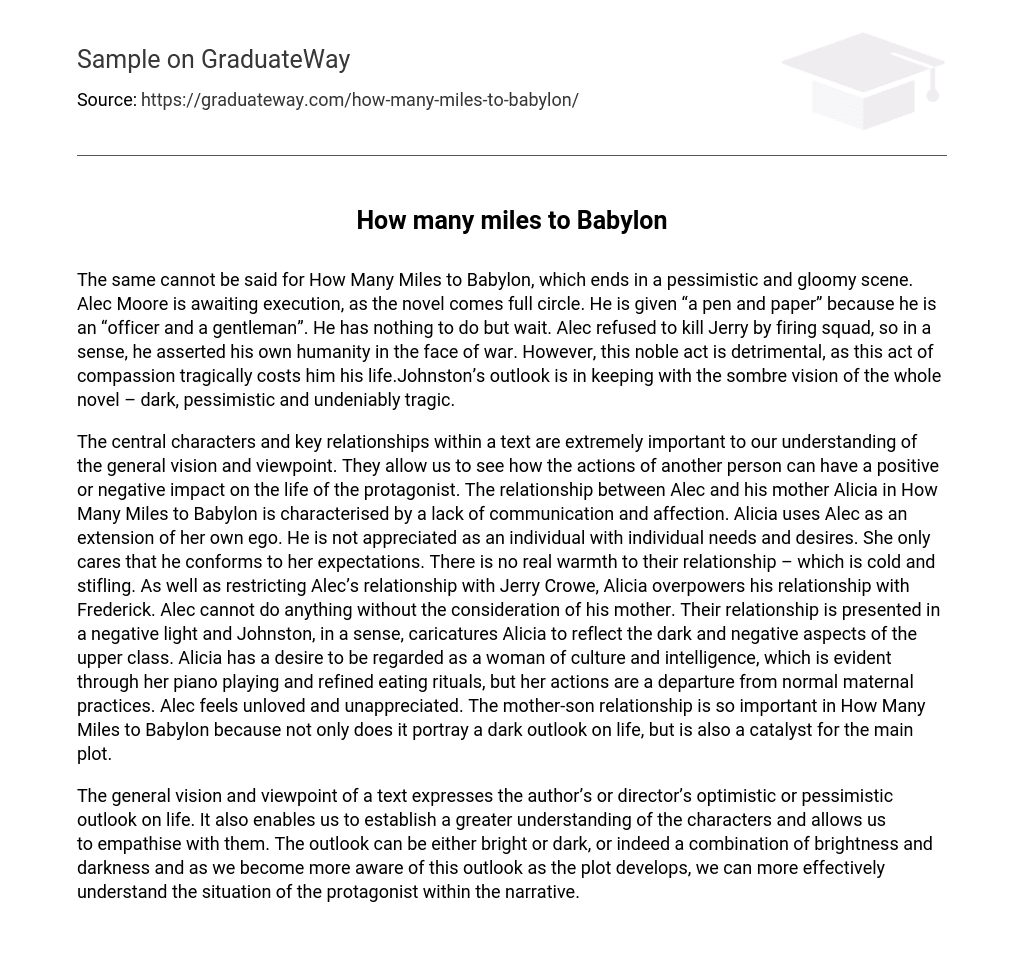The same cannot be said for How Many Miles to Babylon, which ends in a pessimistic and gloomy scene. Alec Moore is awaiting execution, as the novel comes full circle. He is given “a pen and paper” because he is an “officer and a gentleman”. He has nothing to do but wait. Alec refused to kill Jerry by firing squad, so in a sense, he asserted his own humanity in the face of war. However, this noble act is detrimental, as this act of compassion tragically costs him his life.Johnston’s outlook is in keeping with the sombre vision of the whole novel – dark, pessimistic and undeniably tragic.
The central characters and key relationships within a text are extremely important to our understanding of the general vision and viewpoint. They allow us to see how the actions of another person can have a positive or negative impact on the life of the protagonist. The relationship between Alec and his mother Alicia in How Many Miles to Babylon is characterised by a lack of communication and affection. Alicia uses Alec as an extension of her own ego. He is not appreciated as an individual with individual needs and desires. She only cares that he conforms to her expectations. There is no real warmth to their relationship – which is cold and stifling. As well as restricting Alec’s relationship with Jerry Crowe, Alicia overpowers his relationship with Frederick. Alec cannot do anything without the consideration of his mother. Their relationship is presented in a negative light and Johnston, in a sense, caricatures Alicia to reflect the dark and negative aspects of the upper class. Alicia has a desire to be regarded as a woman of culture and intelligence, which is evident through her piano playing and refined eating rituals, but her actions are a departure from normal maternal practices. Alec feels unloved and unappreciated. The mother-son relationship is so important in How Many Miles to Babylon because not only does it portray a dark outlook on life, but is also a catalyst for the main plot.
The general vision and viewpoint of a text expresses the author’s or director’s optimistic or pessimistic outlook on life. It also enables us to establish a greater understanding of the characters and allows us to empathise with them. The outlook can be either bright or dark, or indeed a combination of brightness and darkness and as we become more aware of this outlook as the plot develops, we can more effectively understand the situation of the protagonist within the narrative.





